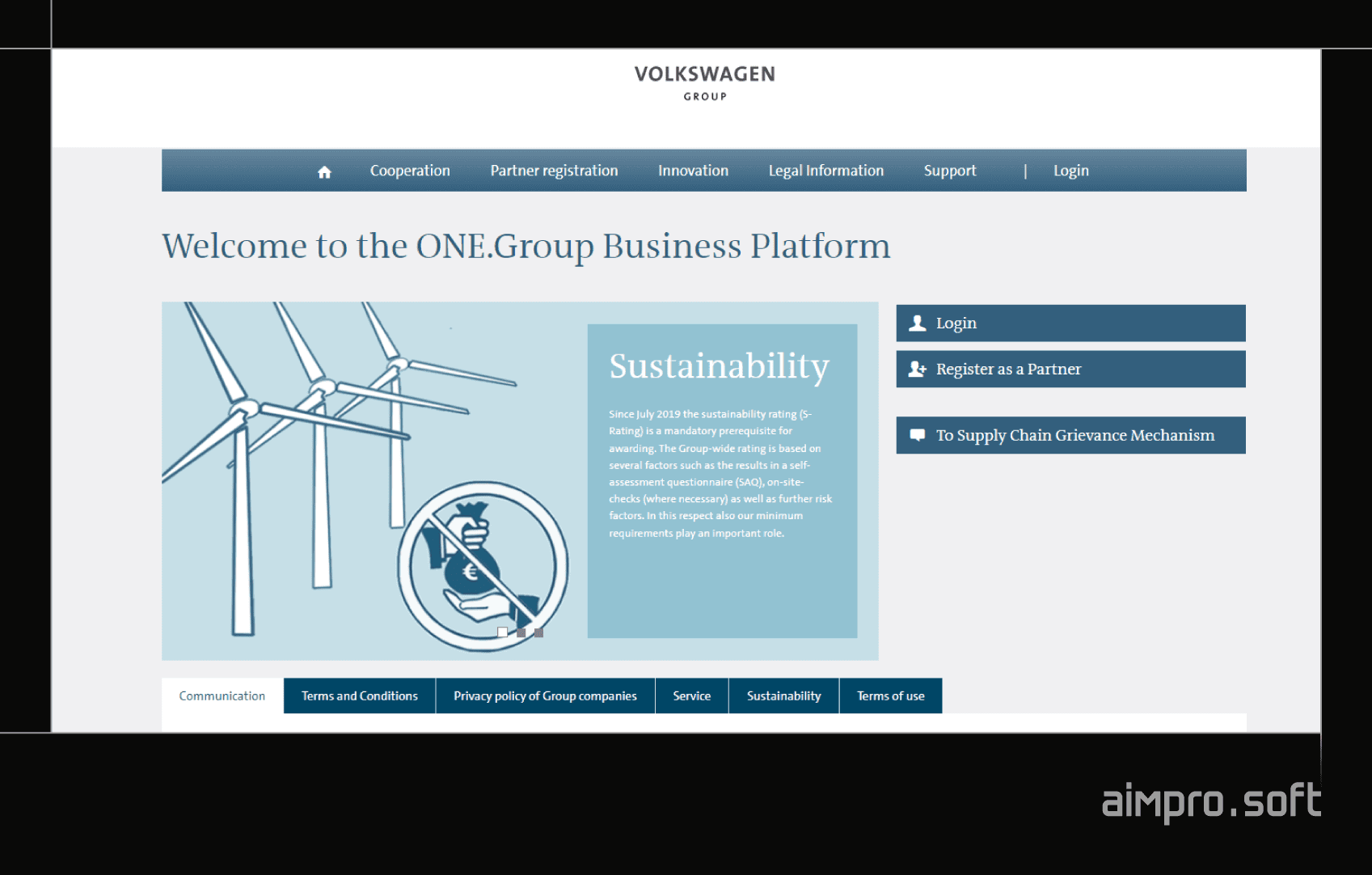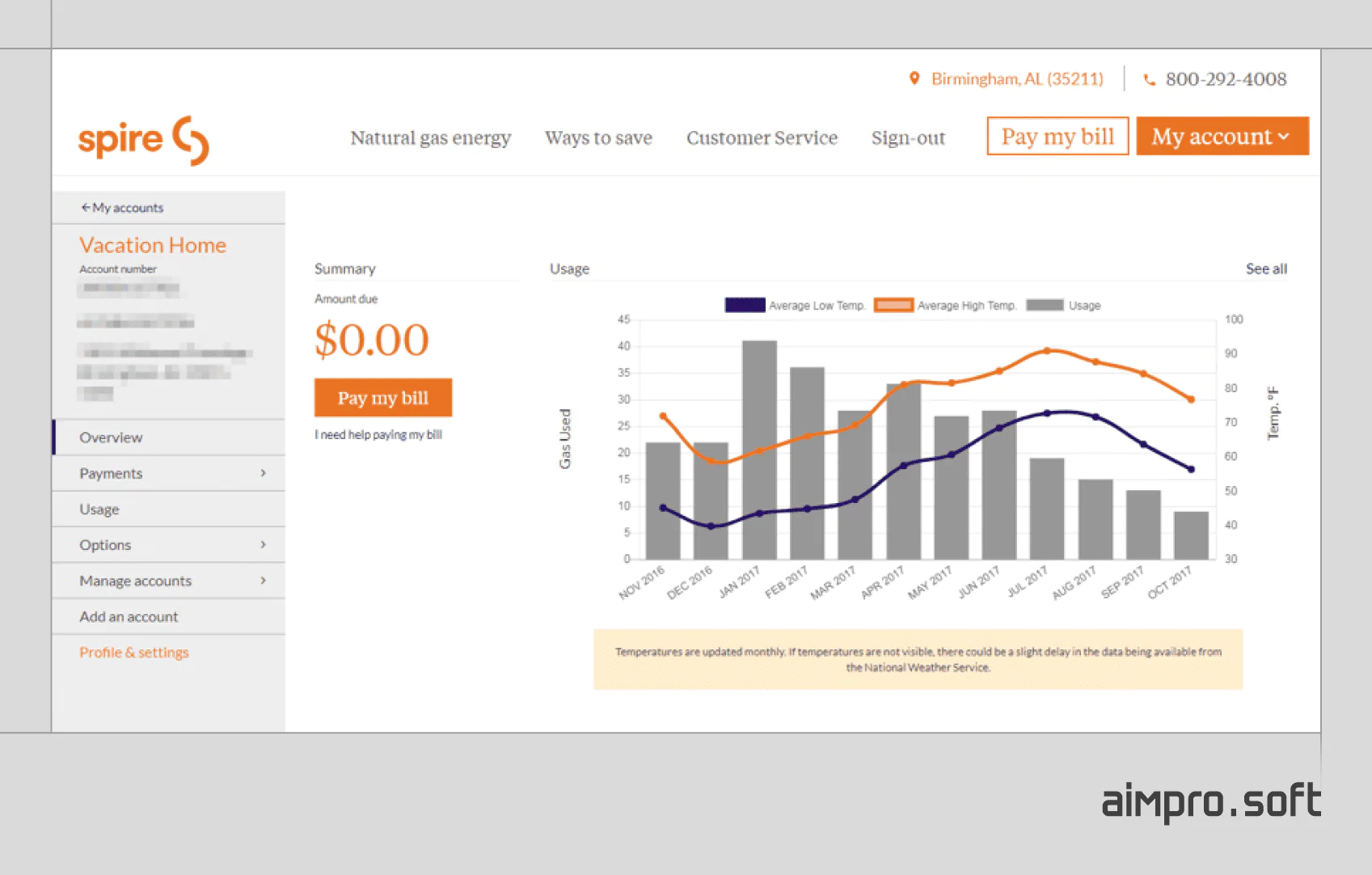Intro to Liferay Extranets: Building Bridges with Partner, Supplier, and Customer Portals

Key takeaways
- Discover the essence of extranet portals and their significance in enhancing business collaboration beyond organizational boundaries. Find out how extranet portals facilitate secure data sharing, streamline communication, and enhance project management.
- Examine the significance of supplier portals in streamlining procurement operations, fostering seamless communication with vendors, and bolstering supply chain efficiency, leading to cost reductions and elevated product standards.
- Explore the benefits of customer portals in elevating customer interactions, delivering tailored support services, and simplifying order fulfillment, thereby nurturing customer satisfaction.
- Learn how customer portals empower users with self-service capabilities, personalized content access, and streamlined order handling, resulting in an increased customer satisfaction level and enhanced retention rates.
Sales targets looming, delays and miscommunication, data fragmentation, and poor CX due to limited access to critical information for stakeholders are the key signs that your company experiences collaboration problems with external parties. But what if we say that there is a solution that can simplify communication, increase efficiency, and keep all the key players—your business, suppliers, partners, and customers—in the loop?
Such a solution is an extranet portal built with the help of a leading DXP platform, namely Liferay DXP, a secure online space designed to bridge the gap between your company and external stakeholders. Extranet portals centralize everything, ensuring everyone can access the latest documents and updates. These portals serve as a platform for real-time communication, allowing you to keep track of projects and keep partners, customers, and suppliers on track.
Suppose you want to improve operational efficiency, optimize manual processes and administrative burdens consuming resources, overcome a lack of collaboration tools hindering teamwork, and solve customer experience issues. In that case, an extranet portal is a proven solution to achieve these goals. In this article, we explore how these portals can change how you connect and collaborate with everyone you need to succeed in your business. We’ll also examine three types of extranet portals to help you understand better which solution is right for you.
Extranets and their significance for your business
Extranets are secure private networks that organizations use to grant authorized external users, such as customers, partners, vendors, or suppliers, controlled access to specific business information and resources. They act as a bridge between a company’s internal network and the outside world, providing a safe and controlled environment for collaboration and information sharing.
N.B: In the Liferay ecosystem, an extranet may be referred to as a portal, and these terms are interchangeable. It is important to note that while some sources
may use the term “extranet” to describe a private network accessible to authorized users, others may prefer the term “portal.”
Why is it essential for business?
Implementing an extranet offers many benefits to businesses:
- One of the most significant advantages of implementing an extranet is its enhanced security, controlling access and preventing unauthorized users from reaching sensitive information.
- Extranets provide collaboration tools such as file sharing, discussion forums, and project management applications, facilitating effective communication and collaboration among stakeholders.
- Extranets are highly scalable, easily accommodating a growing number of users and adapting to changing business needs.
Extranets are invaluable tools for companies looking to increase collaboration and information sharing with external stakeholders while maintaining strong security measures. In the following sections, we’ll examine the three main types of Liferay extranets — customer, partner, and supplier portals — and their unique functionality and business benefits so you can determine which portal your company needs.
While extranets focus on the improvement of your external collaboration, intranets ensure that communication within your organization is on track. Read more about intranets in our article on the topic.
Partner portals
Partner portals built on Liferay are designed to facilitate collaboration and communication between a company and its partners. They enable the centralized distribution of information and resources, including updates on products, services, and programs. By providing an easy self-service experience for partners, these portals aim to encourage partner engagement and support an effective partner ecosystem. Partner portals focus on delivering more efficient selling, robust support for global networks, and facilitating easy self-service experiences, among other benefits.
Why do you need a Liferay-based partner portal?
Improved collaboration. The Liferay platform provides partners with a centralized hub for effective collaboration. This is achieved through features such as document sharing, project management tools, and real-time communication channels. This enhanced collaboration not only increases efficiency but also facilitates faster problem-solving.
Reliability and flexibility. Liferay’s robust platform offers a wide range of features and functions that can be customized to meet specific business requirements. Whether customizing user interfaces, integrating third-party applications, or scaling portal capabilities, Liferay provides the flexibility to adapt to changing business needs.
Seamless integration. Liferay’s open architecture enables seamless integration with existing business processes and systems. Be it ERP, CRM, or other enterprise applications. This integration simplifies operations, eliminates silos, and provides a single view of information, improving overall efficiency.
Operational efficiency. A Liferay-based partner portal improves operational efficiency across the organization by centralizing resources, streamlining processes, and facilitating collaboration. Tasks that previously required manual intervention or involved multiple platforms can now be automated, reducing duplication and saving time.
Key features
Self-service experience
This feature allows partners to access important information, resources, and tools effortlessly. The portal strengthens partnerships and fosters a collaborative environment for mutual growth by simplifying the registration process and increasing engagement through easy access.
Onboarding
This Liferay feature lets you quickly bring partners up to speed with a more streamlined account creation process, using intuitive forms to gather the information they need quickly. Automated notifications also help guide partners through every step of the introduction to your business, ensuring everything is noticed. This integrated approach speeds up the partner onboarding process, strengthens partner relationships, and improves overall sales effectiveness.
Support for global networks
The function ensures that companies can effectively interact with partners around the world. Because the portal scales to support partners regardless of location or time zone differences, it provides seamless communication and consistency across global partner networks.
Role-based access control
This enables administrators to have granular control over user access. The function ensures that partners only have access to information, products, pricing, and resources appropriate to their specific role or level of partnership. By providing individualized access, companies can protect sensitive data and promote transparency and trust in partnerships.
Content personalization
With this feature, partners receive targeted information and communication tailored to their unique needs and interests to deliver relevant content. Personalized content increases partner satisfaction, loyalty, and the likelihood of successful collaboration and joint initiatives.
Seamless integration
Liferay partner portals offer seamless integration by consolidating essential tools and resources for effective selling. Through unified applications, content libraries, and external systems, partners access a single gateway tailored to their needs. Integration with CRMs allows partners to register and monitor deals conveniently in one centralized location. Moreover, the portal tracks the progress and utilization of Marketing Development Funds (MDFs), empowering partners to optimize fund allocation. With a robust Digital Asset Management (DAM) system and advanced search capabilities, partners efficiently manage assets, ensuring easy access to vital information critical for success.
Case study: Hewlett Packard Enterprise

Hewlett Packard Enterprise interface
Challenge: (HPE) is a global IT company that provides enterprise solutions such as servers, storage, and networking equipment. With an extensive network of more than 610,000 partners, collaboration and communication at the highest levels is essential to HPE. However, managing such a large partner network posed challenges, including fragmented resources, multiple logins, and inefficient processes, leading to administrative overhead and communication gaps.
Solution: To address these challenges, HPE implemented a partner portal using Liferay technology. The HPE Partner Ready Portal is a platform that serves as a single point of contact for partners, eliminating the need for multiple logins and providing access to various resources in one place. The portal simplified registration, training, and program management processes, significantly reducing administrative costs.
Supplier portals
Supplier portals serve as critical online platforms designed to optimize communication channels between businesses and their suppliers. These portals act as centralized hubs where companies can seamlessly interact with their suppliers, share information, manage transactions, and coordinate activities. These platforms enable companies to simplify procurement processes, better monitor supplier performance, and strengthen supplier partnerships.
Why do you need a Liferay-based supplier portal?
Streamlined supplier operations. Liferay supplier portal solutions streamline supplier processes by providing a centralized communication, collaboration, and transaction management platform.
Increased efficiency. Liferay’s supplier portal improves operational efficiency by automating manual processes such as purchase order management, invoice processing, and supplier registration. This reduces errors, minimizes delays, and speeds up the procurement cycle, enabling organizations to respond quickly to market demands and gain a competitive advantage.
Improved visibility and control. With real-time access to supplier data, performance metrics, and transaction history, organizations gain greater visibility into their supply chain. In addition, customizable dashboards and reporting tools provide stakeholders with actionable insights to improve supplier relationships and drive continuous improvement.
Efficient procurement and inventory control. Liferay’s supplier portal automates and streamlines order and inventory management processes. This platform allows businesses to minimize the time and resources required to place orders and reduce the risk of costly errors and inconsistencies in inventory management.
Key features
Centralized hub
Liferay portals bring all supplier information, documents, and tools together in a single, easily accessible location. This centralized hub improves visibility into supplier-related activities, reduces the need for disparate resources, and improves the overall efficiency of supplier relationships.
Workflow automation
These portals automate tasks such as purchase orders, invoices, and supplier registration processes. By minimizing manual labor and errors, workflow management features streamline operations, speed up processes, and ensure smooth transactions between businesses and their suppliers.
Integration with back-end systems
This feature enables supplier portals to integrate with existing enterprise systems, providing a holistic view of supplier data and activities. This integration allows teams to access comprehensive insights, helping make more informed decisions by providing all parties with an overall picture of business processes.
History tracking
The feature allows you to integrate back-end systems to give teams access to complete historical data on issues, order updates, and inquiries. This enables rapid response to vendor requests by providing context and information about past interactions.
Document management
The document management feature seamlessly integrates with content repositories, allowing suppliers to upload and download crucial documents such as invoices, documentation, and compliance reports. This centralized storage and retrieval system significantly reduces manual workflow, ensuring a streamlined and efficient process.
Monitoring and improvement of supplier performance
Liferay’s supplier portal enables businesses to monitor and improve supplier performance effectively. Using Liferay, you can set service level agreements and workflow escalation points, providing clear expectations and accountability. The out-of-the-box metrics provided by Liferay allow you to evaluate supplier performance against predefined goals and SLAs. In addition, seamless integration with business intelligence and analytics tools provides access to meaningful reports and metrics directly within the portal interface. With the extensive capabilities of supplier portals, companies can optimize supplier relationships and improve operational efficiency.
Case study: Volkswagen Group France

Volkswagen Group France interface
Challenge: Volkswagen Group France, the French division of Volkswagen AG, oversees the sales and marketing of Volkswagen Group brands in the French market. The company faced poor coordination with suppliers and workshops, so Volkswagen Group France turned to Liferay to create a portal with five dedicated sites for each brand, including Volkswagen, Volkswagen Utility Vehicles, Audi, Seat, and Skoda.
Solution: Volkswagen Group France’s portal development was a game-changer. It integrated various systems, including marketing, customer relationship management, and enterprise resource planning, into a single platform. This portal not only met the company’s need for centralized resources but also facilitated continuous interaction with partners, suppliers, and other stakeholders. The strategic implementation of this portal has significantly expanded Volkswagen Group France’s collaboration channels and optimized processes across its own and suppliers’ ecosystems.
Customer portals
Customer portals are web-based platforms that provide a centralized place for customers to interact with a business. Liferay customer portals offer many features to improve customer service quality and operational efficiency. These portals allow customers to resolve issues themselves, reducing the burden on customer support centers. They provide self-service features, personalized search capabilities, and in-depth analytics to optimize user engagement and satisfaction.
Why do you need a Liferay-based customer portal?
24/7 support. Self-service features in customer portals offer a valuable alternative to traditional customer service, ensuring customers have access to help even when live operators are unavailable. Furthermore, your customer portal can facilitate proactive support by identifying recurring issues reported through self-service channels. This allows companies to quickly address potential problems across the board and reach out to affected customers with an offer of assistance before issues become more serious.
Customer satisfaction analysis. Liferay’s customer portal provides companies with valuable insights into customer behavior, preferences, and needs through robust analytics and reporting tools. By analyzing customer interactions, browsing patterns, and transaction histories, companies can gain precious info to optimize their products, services, and marketing strategies, driving business growth and profitability.
A more personalized experience. Self-service features allow agents to devote more time to individual customers, effectively resolving complex issues. This individualized attention creates a sense of value and takes customer concerns seriously, increasing overall customer satisfaction. Customer portal integration with CRM and ticketing systems further enriches this experience by allowing agents to access past support requests and provide tailored recommendations during interactions.
Ability to grow infinitely. The customer portal serves as the foundation for expanding self-service capabilities to meet your business’s growing needs. Reducing the burden on service teams and maintaining a manageable volume of requests provides scalability as your customer base grows.
Key features
User forums
User forums foster community engagement and mutual support by allowing customers to seek answers and share ideas. These forums serve as valuable feedback channels, allowing companies to gain insights into customer needs and preferences to inform product development and marketing strategies.
Single sign-on (SSO)
Implementing single sign-on simplifies the user authentication process by allowing users to access all portal resources using a single set of credentials. This enhances the user experience by eliminating the need for multiple logins and reducing friction in the customer journey.
Representative assistance
Displaying data from multiple systems to representatives allows them to quickly assist users by providing comprehensive information and context. This feature increases the efficiency and effectiveness of support interactions, resulting in faster problem resolution and higher customer satisfaction.
Personalized search
The personalized search feature allows companies to provide customized search results based on a user’s purchase history, preferences, or profile information. By providing a more customized experience, companies can improve customer satisfaction and increase sales conversion.
Integrated chatbots
Integrated chatbots optimize the support desk experience by directing users to the information they need or seamlessly transferring them to a live representative when necessary. Chatbots can handle routine requests, freeing up staff to handle more complex issues, increasing overall efficiency, and reducing support costs.
Case study: Spire

Spire, Inc. interface
Challenge: Spire is a leading US gas company that serves 1.7 million customers. Spire sought to consolidate two separate account management websites into a single platform solution to improve customer service.
Solution: To address this challenge, Spire turned to Liferay to develop “myAccount,” a single portal integrated with its existing ERP systems, two payment processing systems, and two mobile workforce management systems. yo1-Portal has improved customer service efficiency, provided convenient account management, and strengthened Spire’s position as a leader in the gas industry.
Conclusion
Depending on your company’s needs, you can gain significant benefits from implementing one of the three types of portals: partner, supplier, or customer portal. Such a solution is key to establishing an environment where your team and external stakeholders collaborate smoothly. With a supplier portal, your suppliers benefit from a centralized platform that allows them to track orders and invoices and access product information easily. In turn, with the help of a customer portal, your customers feel valued and informed via personalized experiences. Finally, a user-friendly partner portal can make it easier for your partners to work with your organization and for your employees to provide services seamlessly.
Investing in extranets can create an ecosystem of reliable and smooth collaboration that drives efficiency and ultimately fuels your business growth. Our goal with this article was to help you see the true value of having such an asset and ensure you will be able to make the right decision regarding extranet adoption. If you have any concerns regarding its integration or require assistance with Liferay portal development, you can always contact Aimprosoft for expert guidance to ensure a successful implementation aligned with your business goals.
FAQ
What is an extranet portal, and how does it differ from an intranet?
An extranet portal is a private network that extends beyond an organization’s internal network to external users such as partners, suppliers, and customers. Unlike an intranet, which is limited to internal use, an extranet allows authorized external parties to access specific resources, collaborate on projects, and conduct transactions securely over the Internet.
How can partner portals improve collaboration with external stakeholders?
Partner portals serve as specialized platforms for companies to collaborate with their partners, distributors, and other external stakeholders. These portals provide a centralized hub where partners can access important resources, share information, and collaborate on joint initiatives in real-time. Partner portals simplify communication, increase transparency, and strengthen relationships between companies and their external partners.
Can extranet portals be customized to meet specific business needs and branding requirements?
Extranet portals can indeed be customized to meet specific business needs and branding requirements. Companies can customize the design, layout, and functionality of extranet portals to suit their unique business processes and branding guidelines. Customization options typically include branding elements such as logos, color schemes, and typography to maintain consistency with corporate identity. In addition, companies can integrate personalized user experience and custom functionality to improve collaboration and streamline workflows. Overall, the flexibility of extranet portals allows companies to tailor the platform to their specific requirements.




